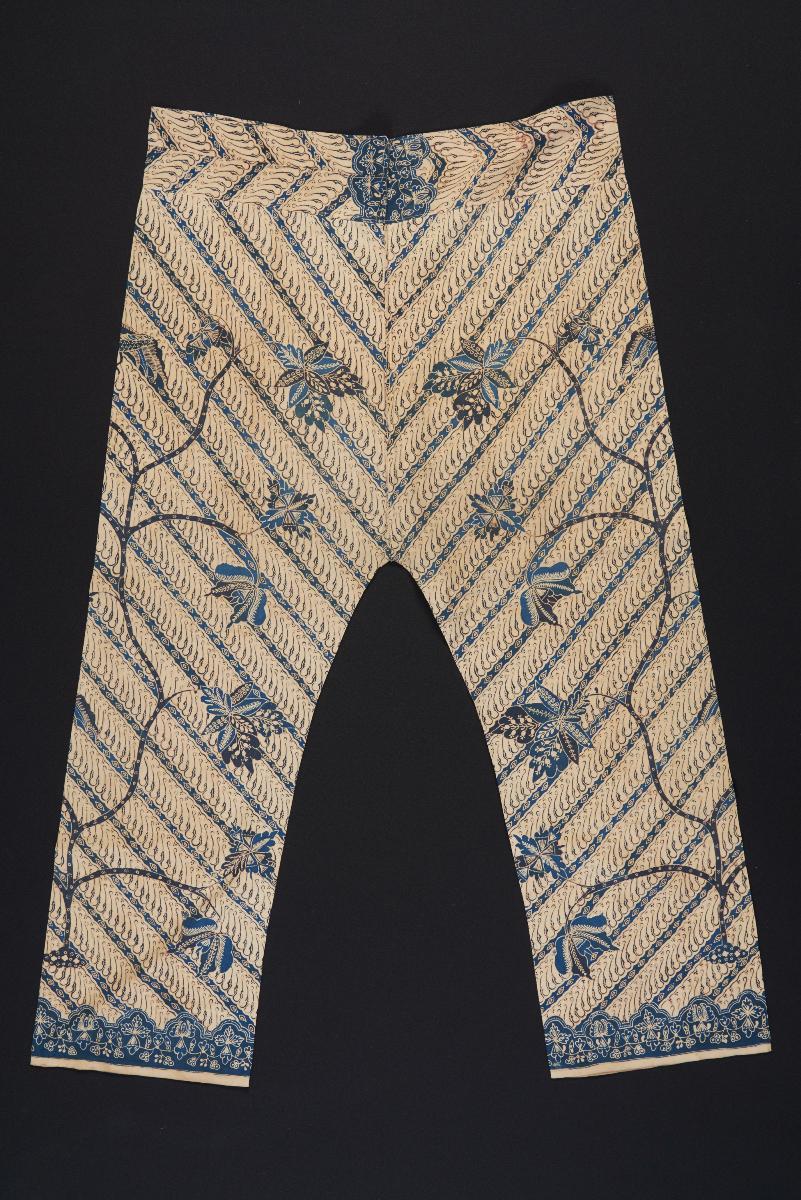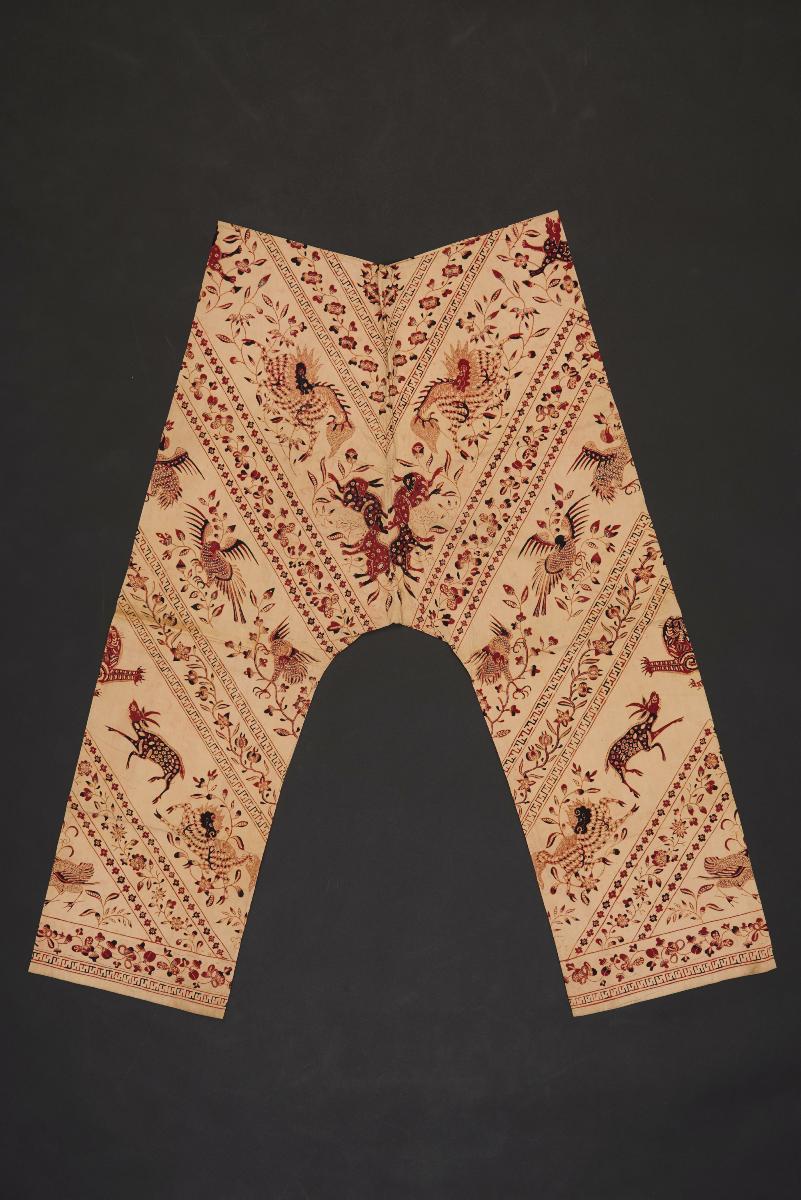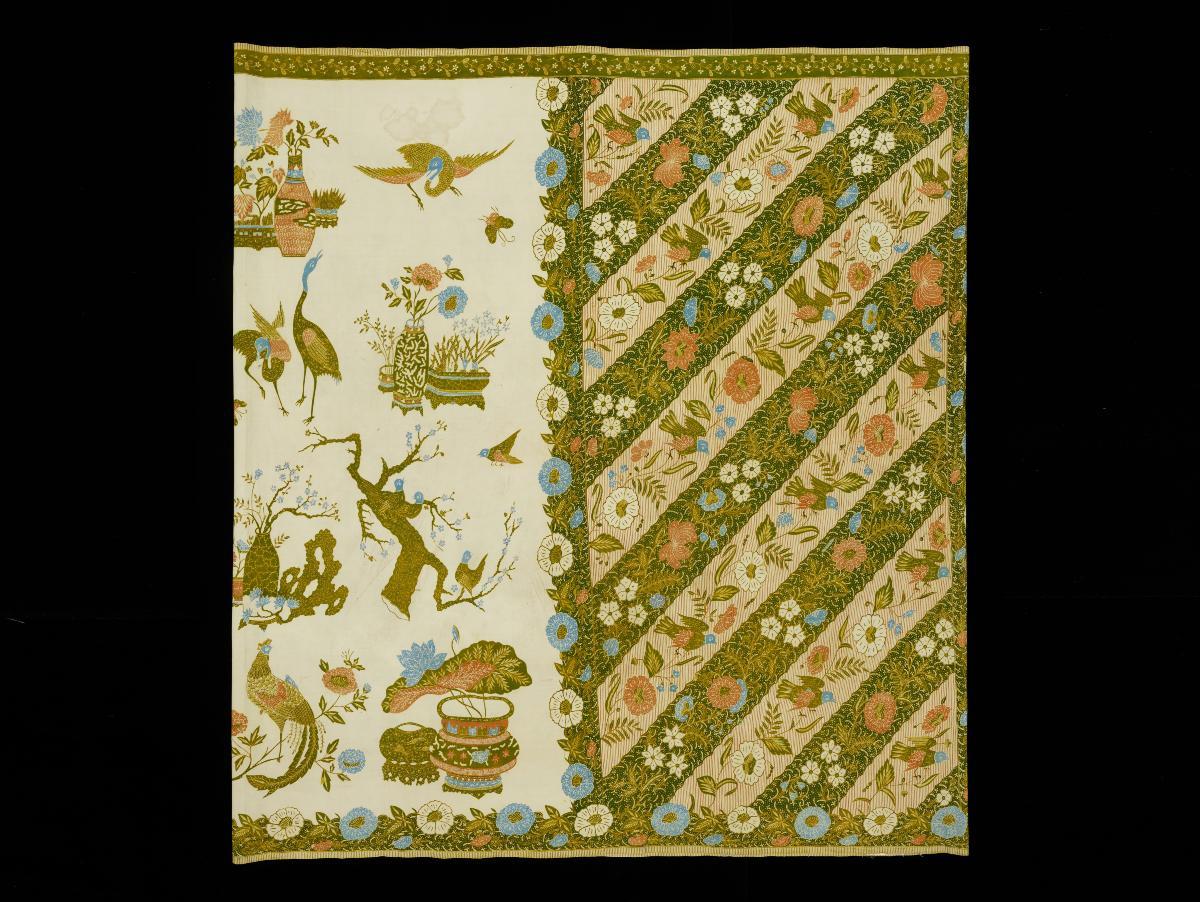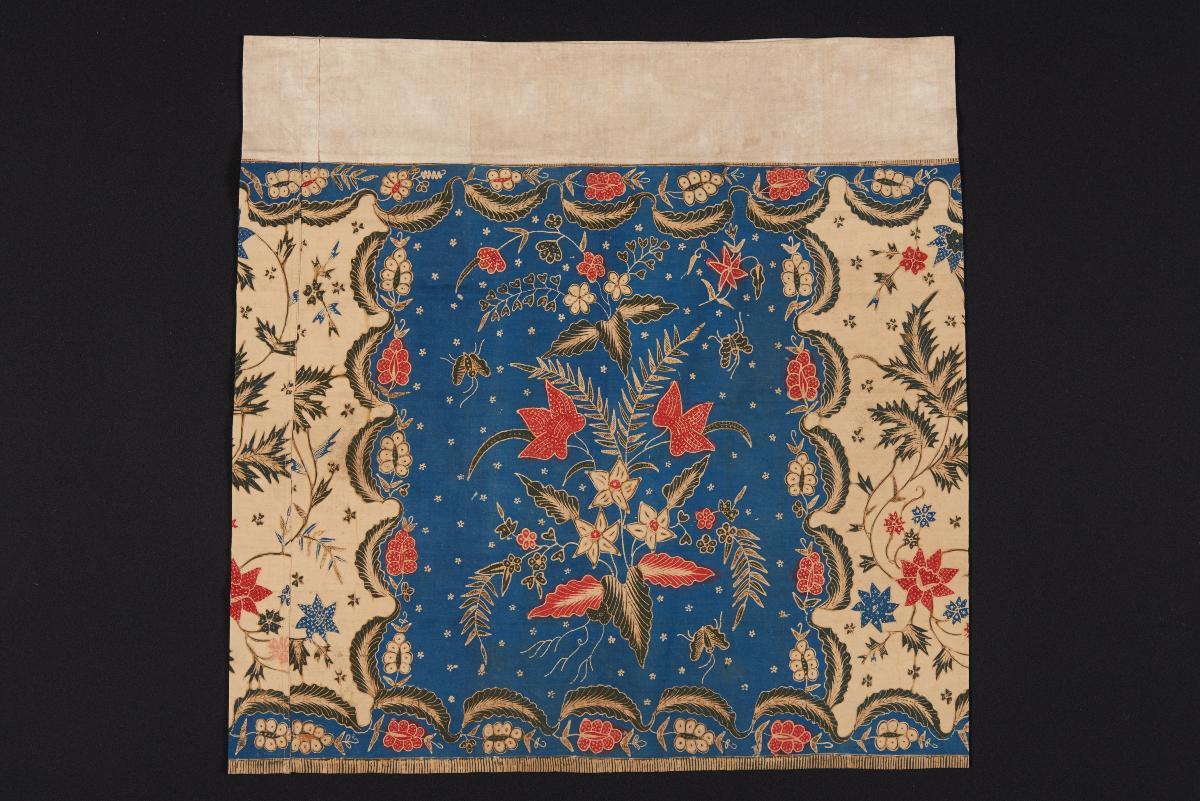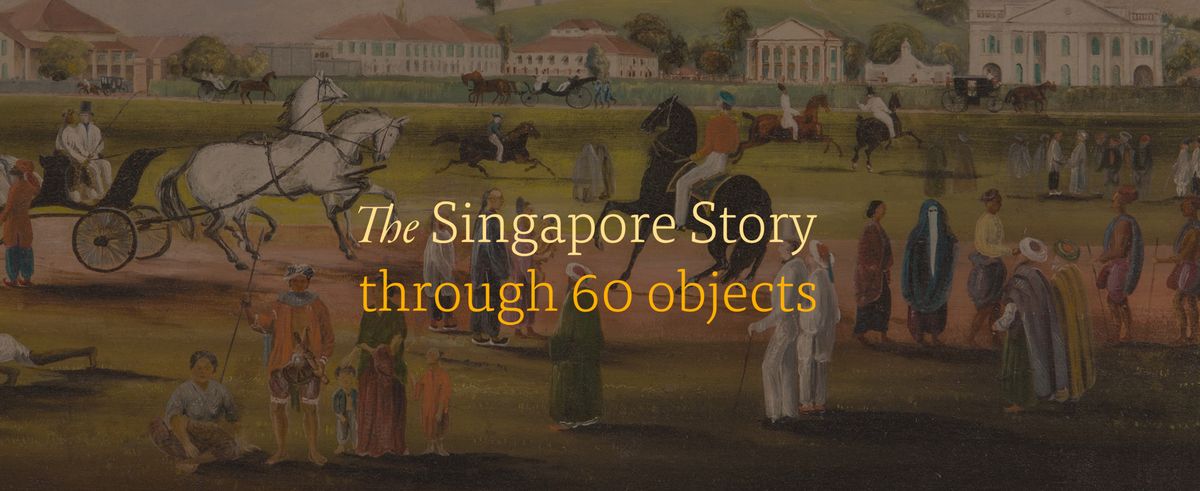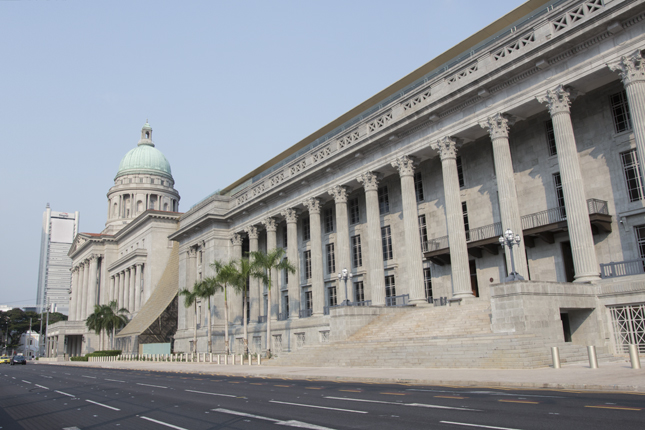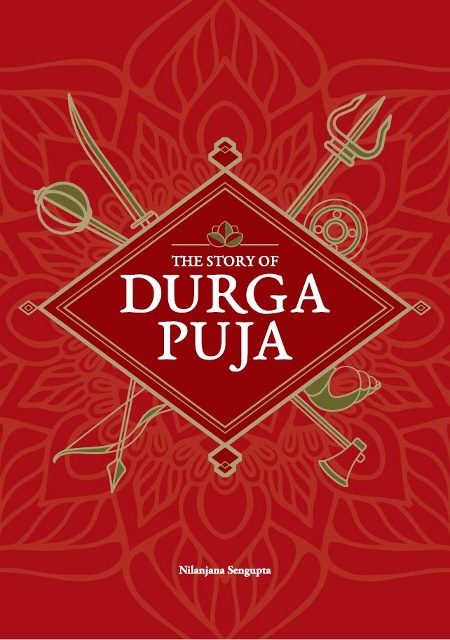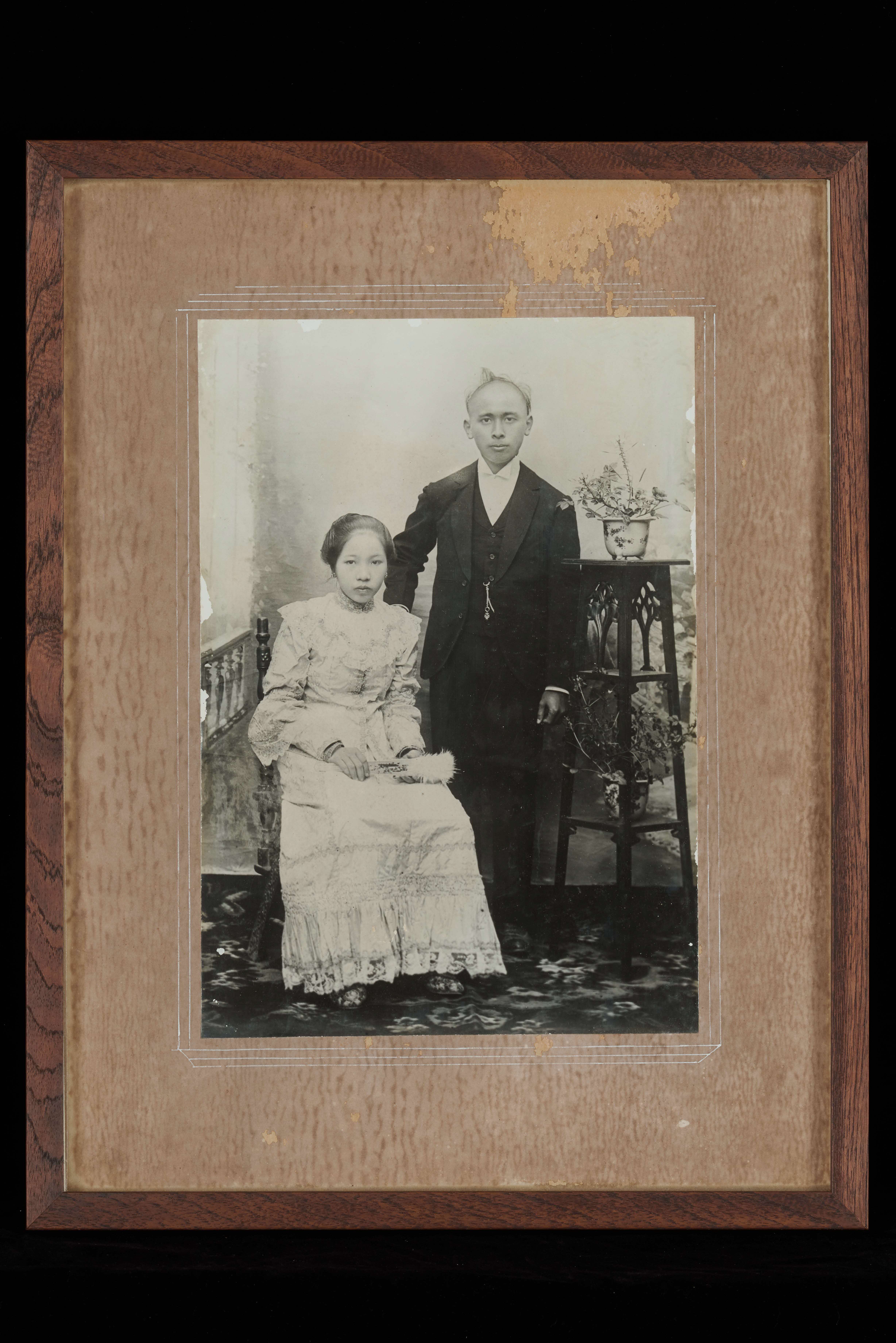This pair of batik pants contains a symmetrical pattern of tendril-like blue flowering stems. They are set against a background of diagonal rows of black wavy lines that are framed by blue borders of white diamond-shaped motifs. The batik cloth is carefully cut and joined in the middle to produce the symmetry of pattern. Beginning in the 19th century, batik was used to produce tailored garments. For European men, batik pyjama (celanda) trousers and sarong (for informal wear) became common as the Europeans adapted to the weather and lifestyle in Southeast Asia. Children’s celanda were often tailored from used adult batik.




